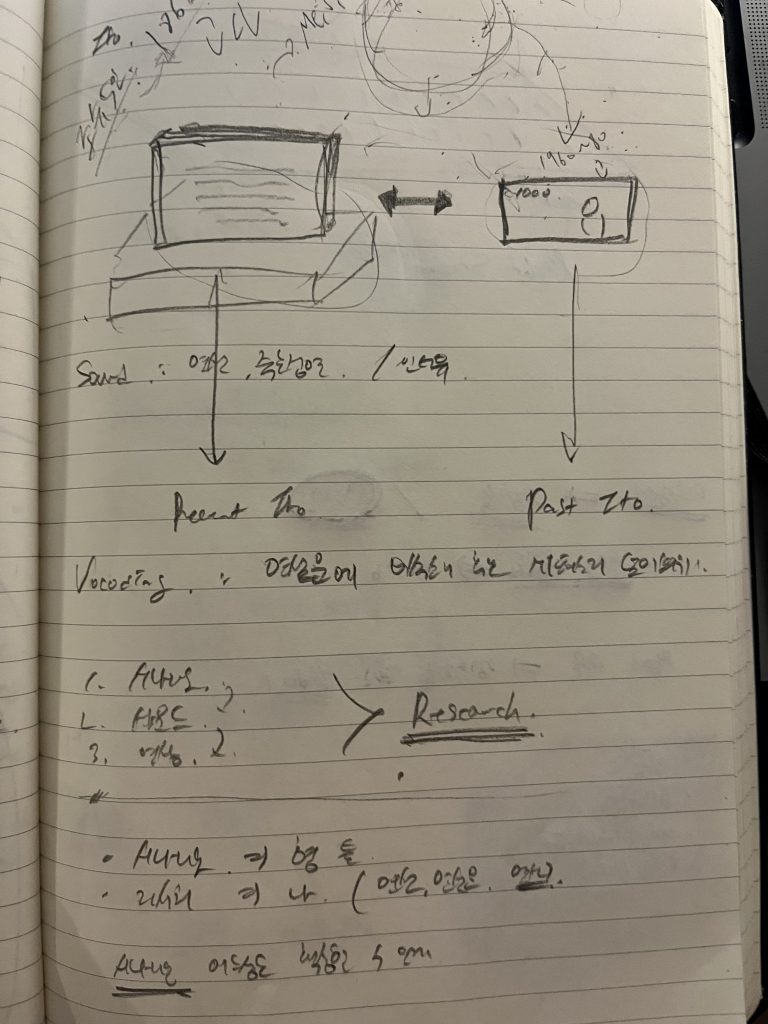I met with Jinhyuk, with whom I am collaborating on this project, to discuss our ideas. Initially, we talked about using the stone monument at UCL with Itō Hirobumi’s name inscribed on it and the old Japanese banknotes featuring him as a symbol as the core elements of our work. The main topic of our discussion was how to develop these ideas further.

The first point of interest was the relationship between the monument and the banknote. The monument represents a young Itō Hirobumi (around 20 years old), while the banknote was created long after his death, commemorating his achievements. This contrast led us to the concept of “a conversation with my future self.” Rather than simply having a direct conversation, we thought an interview format could make the piece more engaging and humorous. Through the interviewer’s questions, the audience could naturally learn about the relationship between these two elements and Itō Hirobumi’s historical significance.
However, since a stone monument and a banknote cannot speak, we had to decide how they would respond. One of our initial ideas was to leave them completely silent, letting the absence of a response speak for itself. As we explored different approaches, we came up with the idea of using vocoding—recording a speech that Itō Hirobumi once gave, capturing the sounds of the monument and the banknote, and processing them together to generate their “voices.” We both agreed on this approach and decided to move forward with it. We also concluded that we could refine and develop the idea further after testing our initial plan.
For our next steps, we decided to conduct some individual research and draft a rough script before our next meeting. When we meet again, we will finalize what the dialogue will be, what language we will use, and how we will record it. After that, we will visit the actual locations, record the sounds of the monument and banknote, and process them into a sound piece. Then, we will film the interview, edit the video, and integrate the sound. Finally, we will evaluate whether we need to develop the project further or bring it to a conclusion.